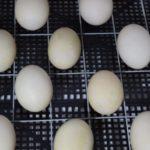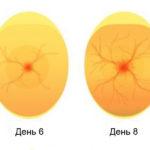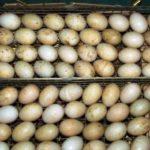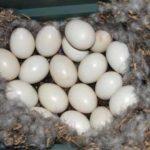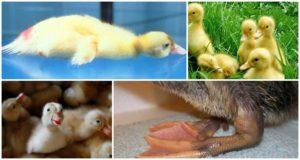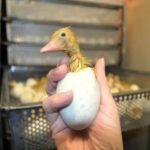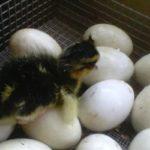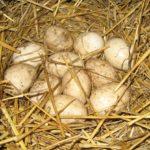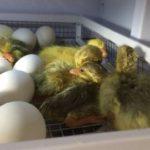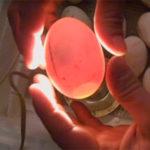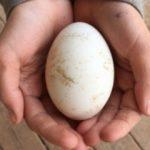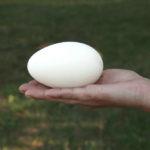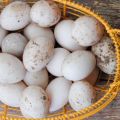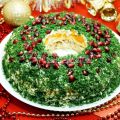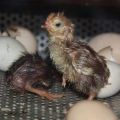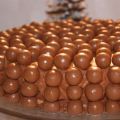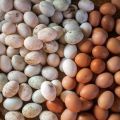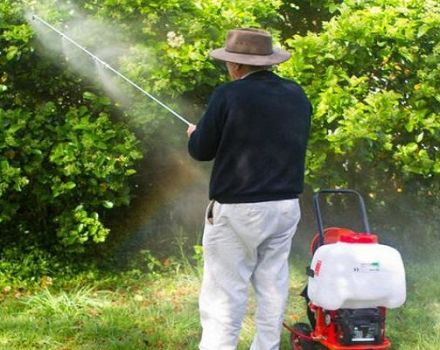Duck egg incubation table and development schedule by timing at home
With the home method of breeding ducks, the question arises of additional incubation of duck eggs. This helps to increase the number of ducklings without involving hens. An adult incubates 15 to 20 eggs at a time. To get more offspring, they use special devices, adhere to the established rules. Rejection of material is important, as well as installation and control over temperature conditions.
Egg selection rules
The material that is suitable for incubation is selected according to the established rules:
- in terms of weight: from 75 to 90 grams;
- the location of the yolk in the center, the transparency of the protein;
- shell uniformity and traditional shape, color - even, saturated.
Information! To select eggs, a transillumination technique is used.
Eggs with the following characteristics are not suitable for further work:
- non-standard, elongated or flattened shape;
- if microcracks are visible on the shell, the shell is deformed, unevenly colored, has growths;
- if, when translucent, 2 formations are visible, suggesting the presence of yolks.
Translucence is a procedure that is carried out using a special apparatus, an oatscop.
Do eggs need to be washed?
Duck eggs are smeared with bird droppings. Before removing the material on the incubation tray, it is thoroughly cleaned of adhering debris. Eggs are usually not washed unless they are more than 50 percent contaminated.
Reference! If the shell cracks when washing, then such an instance is removed.
Equipment selection
Incubators are used for artificial breeding of ducklings. The task of incubators is to imitate the processes that occur with eggs if a duck incubates them. Incubators are machines that maintain the temperature required for chicks to emerge.
There are 2 main types of incubators:
- Manual. Incubators designed for private households where the number of eggs does not exceed 100 pieces. They are equipped with troughs for filling with water, but the material is turned over manually.
- Automatic. Various types of machines with an automatic system of movement of trays in which the material is located. Movement is carried out by moving the rollers or changing the angle of inclination of the tray.
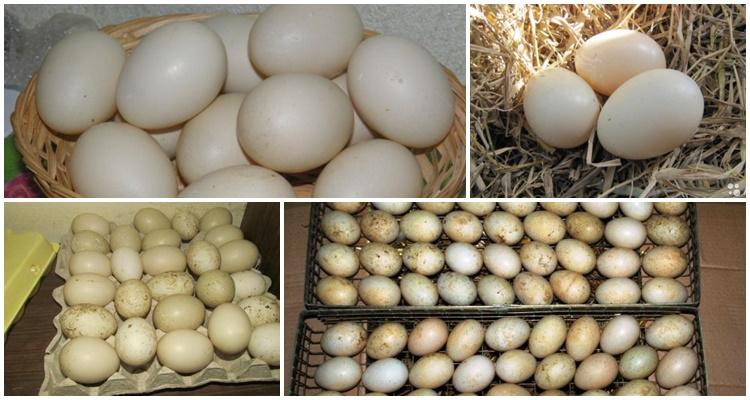
Reference! When incubating, the hen moves the egg independently. This mechanism is inherent in the nature of the laying duck.
Bookmark and incubation
They start laying down after culling the eggs and setting the mode on the incubator. Bookmarking is recommended in the morning.
Bookmark rules
How to lay duck eggs at home:
- eggs are marked on both sides so as not to get confused when turning from one side to the other side;
- the incubator is heated to + 38 degrees, the gutters are filled with water;
- before laying the eggs, they are kept at room temperature for 30 minutes;
- coarse material is laid first, after 4 hours smaller eggs are laid.
Incubation modes
Incubation modes change over time.
Summary data table.
| From what to what day | Temperature | Moisture (percent) | Features: |
| First 7 days | from +38 to +38.3 degrees, but no more | 75 | During this period, the eggs are turned over about 4 times daily. |
| Second week | +37.8 degrees | 60 | At this stage, they begin to spray the material for cooling. |
| 15-25 days | + 37.8 degrees | 60 | During pecking, cooling is necessary, it is carried out in the morning and in the evening for 15-20 minutes |
| from 25 to 28 days | from +37.5 to +37.2 degrees | up to 90 | The temperature is lowered if there are many eggs inside the incubator |
When breeding ducklings, temperature and humidity indicators are of great importance. If the regimes are not controlled, ducklings can die at any stage of development.
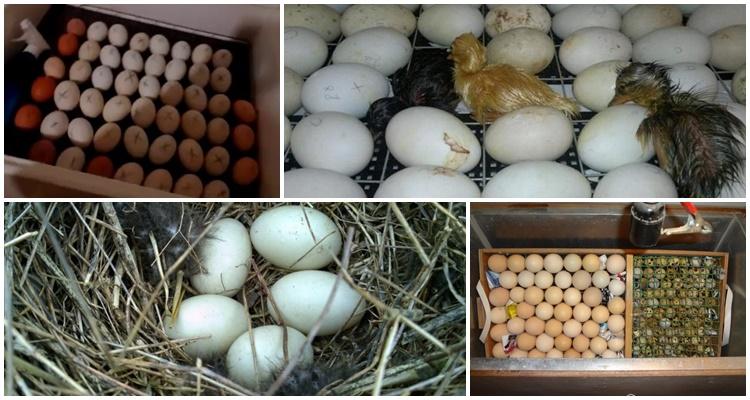
A special role is given to the cooling process. You can independently reduce the temperature inside the incubator using a spray bottle. This helps to cool and moisturize the material at the same time.
Warm water is poured into the container, uniform spraying is carried out throughout the period when turning is carried out.
Ventilation requires a ventilation system inside the incubator. Some models have constant air circulation, while others involve manual switching on of the fan at specific hours. Future chicks absorb oxygen at a certain rate:
- from 1 to 2 weeks - 3 liters of air daily;
- a day before pecking - from 8 to 10 liters of air.
Information! Insufficient air supply leads to the death of embryos.
Embryo development
Ducklings hatch in 27-28 days. For each stage of development, certain features are characteristic.
Chick development schedule:
| Term | Description |
| First week | The formation of the circulatory system occurs, the rudiments of the limbs are visible |
| Second week | A fluff appears on the head, the final formation of the beak and eye openings occurs |
| Third week | The yolk is completely retracted, fluff appears all over the body |
| Fourth week | Teething begins, eyes open |
It will take up to 35 days to breed Indo-chicks. Mulard chicks hatch on day 30. In these cases, the processing time is shifted several days in advance.
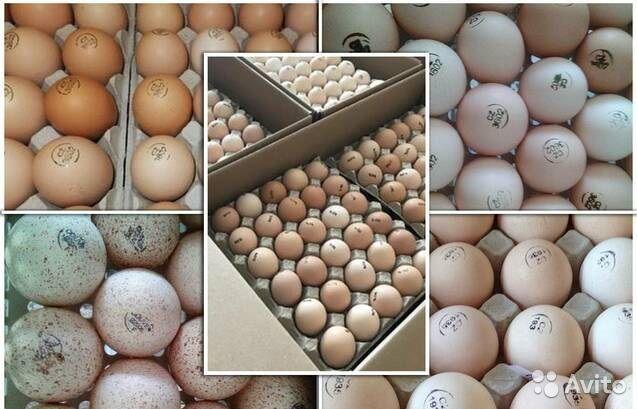
Rejection
Rejection helps to remove unsuitable copies in a timely manner. Culling is carried out according to the main criteria:
- If a blood ring appears around the egg on days 1-6, then this indicates the death of the embryo.
- In the second week, the appearance of frozen chicks is diagnosed. They are identified by a darkening spot located in the center of the egg. At the same time, visualization of blood vessels is not possible.
- At the last stage of development, those chicks die that are not able to peck the shell. This is due to insufficient beak development.
The reasons for the death of embryos are various pathologies:
- infectious infections of the fetus;
- hereditary infections;
- high or low humidity inside the incubator;
- increase or decrease in temperature beyond the permissible limits;
- violations of gas exchange processes.
First actions after birth
When the incubation period comes to an end, it is necessary to prepare for the next stage. Hatching takes about 24 hours.Helping chicks is allowed only a day after the start of shell destruction. Until that time, the chicks hatch on their own. Description of the hatching process:
- The chick makes a hole in the shell with its beak.
- After the hole appears, there is a period of calm, then a viable duckling begins to expand the hole.
- With the help of support on its paws, the duckling completely destroys the shell.
If the position of the chick in the shell was incorrect, one day after pecking it is helped to get out.
Attention! If the vascular mesh is visible when the shell is translucent, then there is no need to help the chick, even if he makes attempts to peck the shell. When the vascular network is destroyed from the outside, the chick will die.
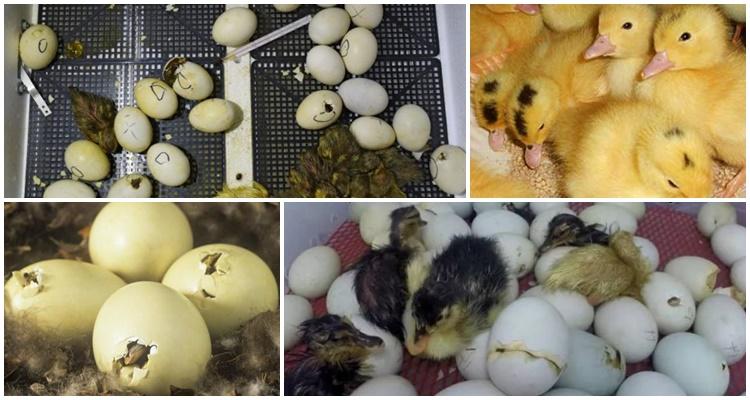
After the ducklings hatch, you must adhere to the action plan:
- The chicks are allowed to dry.
- After drying, the cannon of each chick is inspected. At the same time, the beak and eyes must be clean. When palpating, the abdomen should be firm, but not saggy.
- After that, the umbilical cord is examined. The best option - the umbilical cord is healed.
- All viable ducklings are transplanted into a prepared box.
- Up to 10 days of life of chicks they are kept at a temperature of +28 degrees.
A day after hatching, the ducklings must meet certain characteristics:
- stand steadily;
- actively move;
- consume food with appetite;
- down on the body is evenly distributed.
Frequent mistakes
The death of embryos or other problems that arise during the incubation period are associated with the fact that poultry farmers make typical mistakes:
- Uneven heating. During cooling, lowering the temperature or airing, it is recommended to shift the material: from the edges to the center and vice versa. Lack of warming leads to higher mortality rates.
- Elevated temperature. Fear of freezing chicks often results in the breeder raising the temperature. The heatstroke resulting from an increase in temperature leads to the death of the embryo.
- Inconsistency of moisture indicators. If the humidity drops too low, then the air chamber inside the shell increases. Chicks start biting ahead of schedule. The result is the appearance of small weak ducklings.
- Lack of ventilation. If you do not ventilate the material, then you can create conditions for the birth of chicks with all kinds of defects. Such ducklings do not stand on their feet, do not show activity, they can die on the 7th day after pecking.

Tips for novice poultry farmers:
- If you do not warm up the eggs before placing them in the incubator, the timing of hatching may be delayed.
- If you lay defective eggs that did not pass the rejection, the total death of chicks is likely for 2 days.
- Early removal is possible when the temperature was excessively increased in the second stage of incubation.
- Difficulty pecking for 24 hours is observed in cases when the moisture indicator is periodically disturbed during incubation.
Taking into account the mistakes of previous clutches helps to normalize the incubation, make the necessary adjustments and get healthy offspring of ducks.
